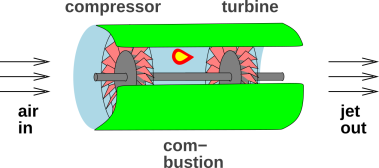
Figure 1: Turbojet – What’s Wrong with This Picture?
In reference 1, I asked:
At the most basic physics level, what makes a turbojet engine go the right way?
Short answer: MECHANICAL ADVANTAGE.
Longer answer: I asked what’s wrong with this picture:
One thing that’s wrong is that it suggests that the turbine is "just like" the compressor. It’s not. The pitch of the turbine blades is roughly twice the pitch of the compressor blades, as shown in figure 2. If you go to an aviation museum and look at the blades on a cut-away engine, this fact will jump out at you (now that you know what to look for).
In particular, suppose we take an engine and rather than burning fuel in it, we just pump some gas (e.g. argon) into it using a hose, as shown in figure 3. No temperature changes or pressure differences occur in this case. (Also, for simplicity, we are ignoring all forms of leakage and slippage.)
So in the steady state, if we pump in one liter per second of argon, we get out 2 liters per second of mixed gas (one liter/sec of air mixed with one liter/sec of argon). This two liters of mixed gas turns the shaft just enough to pump one liter/sec of pure air in the front.
In general, if the mechanical advantage is k, the ratio of output volume (mixed gas) to injected volume (argon) is
| ratio = |
| (1) |
which you may notice has the same form as an equation that showed up in the analysis of sailing directly upwind (or directly downwind), as discussed in reference 2. If you try to set the mechanical advantage to unity, as suggested by figure 1, then the thing definitely does not work.
Now we need to think about the pressure. In normal operation, there is a large pressure difference across the compressor stage. There is a k-fold smaller pressure difference across the turbine stage. This is a good thing, because we *want* some left-over pressure to make thrust. The whole point of the turbojet engine is to produce an unbalanced force!
So we see that another thing that is wrong with figure 1 is that the nozzle is missing. A better drawing would be
Obviously we have:
– atmospheric pressure far ahead of the engine,
– high pressure in the guts of the engine, and
– atmospheric pressure far aft of the engine.
If there is (say) a 100 PSI pressure difference across the compressor stage, there is only a 50 PSI pressure drop across the turbine stage (assuming k=2). The rest of the pressure drop occurs across the nozzle. Note that this latter pressure drop does not occur because the gas is pushing on the nozzle – it occurs because the gas is pushing on itself, converting pressure (potential energy) to velocity (kinetic energy).
We have seen that the compressor stage involves a relatively small volume of gas with a big pressure difference, while the turbine stage involves a relatively large volume of gas with a smallish pressure difference. Since the energy to drive the compressor comes from the turbine, it is important to verify the energy-balance equation:
| pressure(trb) * volume(trb) = pressure(cmpr) * volume(cmpr) (2) |
We see that the operation depends on the fact that the volume of the exhaust gases is much larger than the volume of air taken in through the compressor.
(The mass is practically the same, but the volume is larger because of the temperature increase, and it is the volume that enters into the energy equation above. For homework, give three reasons why the mass of the fuel is insignificant compared to the mass of the air.)
Have you ever wondered how big a battery it takes to start the engines on a DC-10?
Well, I’ve seen the starting-battery on a DC-10 and it’s only slightly bigger than the battery in my car. The trick is that they don’t use it for starting the main engines. There’s an APU (Auxiliary Power Unit) in the tail, and the battery is only big enough to start the APU. The APU is a tiny little gas turbine (about 400 HP if I recall) and once it is going, you can bleed some high-pressure air from it to spin up the main engines. It’s not done using exactly the method suggested in figure 3, but it is done pneumatically.